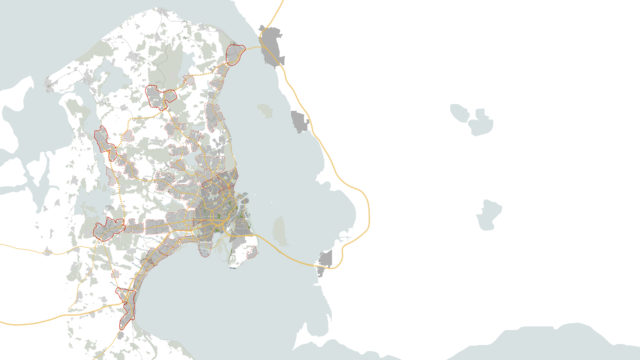Fingerplan 2.0
The proposal for the development of the Copenhagen area aims to strengthen individual towns while improving connections between them, turning the “Købstæder” from traffic endpoints into active players. The original structure of the Finger Plan is preserved, but the urban network becomes more cohesive.
In addition to this, integrating more green and blue spaces into urban areas will allow for more attractive and climate resilient cities, which also contribute to biodiversity and have better opportunities for soft traffic connections.
Finally, thinking in terms of cohesive city regions rather than administrative boundaries can help strengthen the identity of each area, ensuring the creation of attractive and unique towns where everything that residents need is located within cycling distance.
- Location Hovedstaden, Denmark
- Client Danish Association of Architects
- Year 2024
- Status Honorable Mention, Competition proposal
- Team Rune Veile, Arne Cermak Nielsen, Sara Buhl Bjelke, Chen Ding
